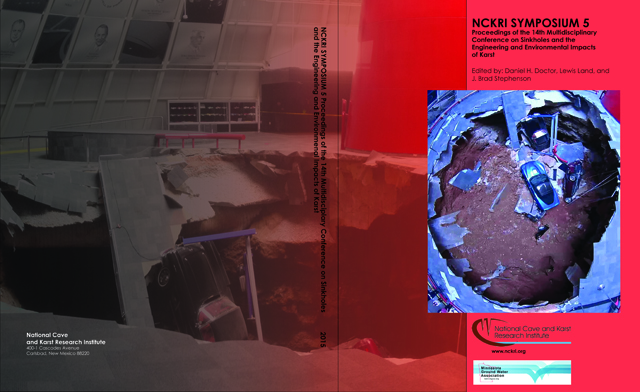Abstract
The Cretaceous Chalk aquifer is the most important in the UK for the provision of water to public supply and agriculture. The Chalk has both matrix and fracture porosity and is thus best considered as a dual porosity aquifer system. Although the matrix porosity is large, typically around 0.35 in the study area of East Yorkshire, UK (ESI, 2010), pore diameters are typically very small, and the water contained in them is virtually immobile. The high permeability fracture network is responsible for the ability of water to drain; spatial variations in fracture network properties mean conventional approaches to aquifer characterization such as borehole pumping tests are of limited utility. Hence this study attempts to better understand the flow system and characterise aquifer properties from the recession response seen at springs during the spring/summer period when recharge is minimal. This approach has the advantage that spring hydrographs represent the sum of the response from entire catchments. This paper reports numerical modeling for simulating aquifer and spring responses during hydrological recession. Firstly, available geological and hydrogeological information for the study area was used to develop hydrogeological conceptual models. Four different numerical models have been constructed representing four possible scenarios that could represent the aquifer in the selected area. These are: single reservoir aquifer, double reservoir aquifer, single reservoir aquifer with highly permeable vertical zone intersecting the spring location and single reservoir aquifer containing tunnel shaped highly permeable zone at the spring elevation respectively. The sensitivity of spring recession response to various external and internal parameter values was investigated, to understand relations between spring recession, hydrological inputs (recharge) and aquifer structure. Spring hydrographs from the real aquifer were compared with the hydrographs generated from models, in order to estimate aquifer properties. The work aims to identify the utility of spring hydrographs in eliciting aquifer permeability structure, as well as identifying the conceptual scenario which best represents the Chalk Aquifer in East Yorkshire, UK.
Rights Information
DOI
http://dx.doi.org/10.5038/9780991000951.1029
Numerical Simulation of Spring Hydrograph Recession Curves for East Yorkshire Chalk Aquifer, UK
The Cretaceous Chalk aquifer is the most important in the UK for the provision of water to public supply and agriculture. The Chalk has both matrix and fracture porosity and is thus best considered as a dual porosity aquifer system. Although the matrix porosity is large, typically around 0.35 in the study area of East Yorkshire, UK (ESI, 2010), pore diameters are typically very small, and the water contained in them is virtually immobile. The high permeability fracture network is responsible for the ability of water to drain; spatial variations in fracture network properties mean conventional approaches to aquifer characterization such as borehole pumping tests are of limited utility. Hence this study attempts to better understand the flow system and characterise aquifer properties from the recession response seen at springs during the spring/summer period when recharge is minimal. This approach has the advantage that spring hydrographs represent the sum of the response from entire catchments. This paper reports numerical modeling for simulating aquifer and spring responses during hydrological recession. Firstly, available geological and hydrogeological information for the study area was used to develop hydrogeological conceptual models. Four different numerical models have been constructed representing four possible scenarios that could represent the aquifer in the selected area. These are: single reservoir aquifer, double reservoir aquifer, single reservoir aquifer with highly permeable vertical zone intersecting the spring location and single reservoir aquifer containing tunnel shaped highly permeable zone at the spring elevation respectively. The sensitivity of spring recession response to various external and internal parameter values was investigated, to understand relations between spring recession, hydrological inputs (recharge) and aquifer structure. Spring hydrographs from the real aquifer were compared with the hydrographs generated from models, in order to estimate aquifer properties. The work aims to identify the utility of spring hydrographs in eliciting aquifer permeability structure, as well as identifying the conceptual scenario which best represents the Chalk Aquifer in East Yorkshire, UK.

